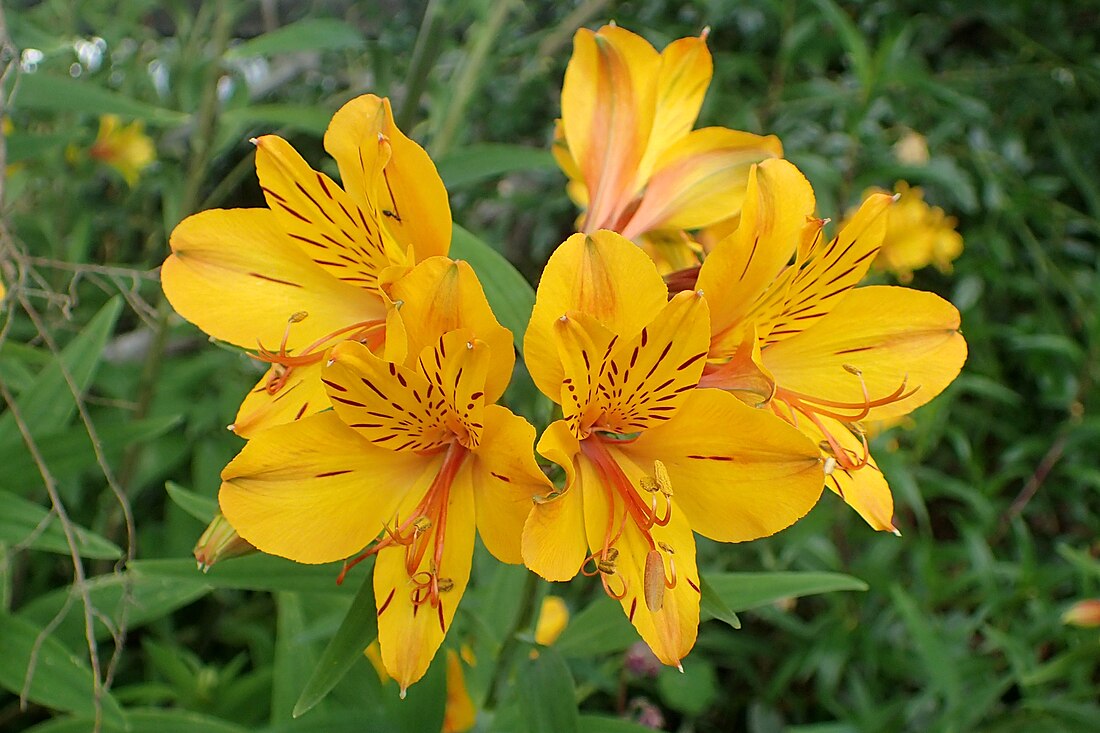Alstroemeria aurea
Species of plant From Wikipedia, the free encyclopedia
Alstroemeria aurea is a species of flowering plant in the family Alstroemeriaceae, native to Chile and Argentina, but naturalised in Australia, New Zealand and the United Kingdom.[2] It is also widely cultivated as an ornamental.
| Alstroemeria aurea | |
|---|---|
 | |
| Scientific classification | |
| Kingdom: | Plantae |
| Clade: | Tracheophytes |
| Clade: | Angiosperms |
| Clade: | Monocots |
| Order: | Liliales |
| Family: | Alstroemeriaceae |
| Genus: | Alstroemeria |
| Species: | A. aurea |
| Binomial name | |
| Alstroemeria aurea | |
 | |
| Alstroemeria aurea is native to Chile and Argentina[1] | |
| Synonyms[1] | |
| |
Common names
Common names include yellow alstroemeria,[2] though cultivars have been selected in a range of colours. The name Peruvian lily is often applied to this and other species of Alstroemeria, despite the fact that most are not native to that country.[citation needed]
Description
Growing to 1 m (3.3 ft) tall by 0.5 m (1.6 ft) broad, it is a herbaceous perennial with brittle, fleshy roots beneath erect stems with narrow leaves. Many orchid-like flowers[3] in brilliant shades of yellow and orange. appear in early to midsummer. The flowers may be heavily spotted or striped with red or brown. If undisturbed, plants will spread rapidly in benign conditions.[4]
Cultivation
When cultivated it is one of the hardiest alstroemerias, surviving temperatures of −10 °C (14 °F). It requires a sheltered spot in sun or part shade.[4]
Etymology
The Latin specific epithet aureum means "golden".[5]
References
Wikiwand - on
Seamless Wikipedia browsing. On steroids.



